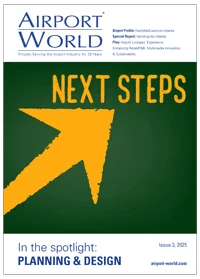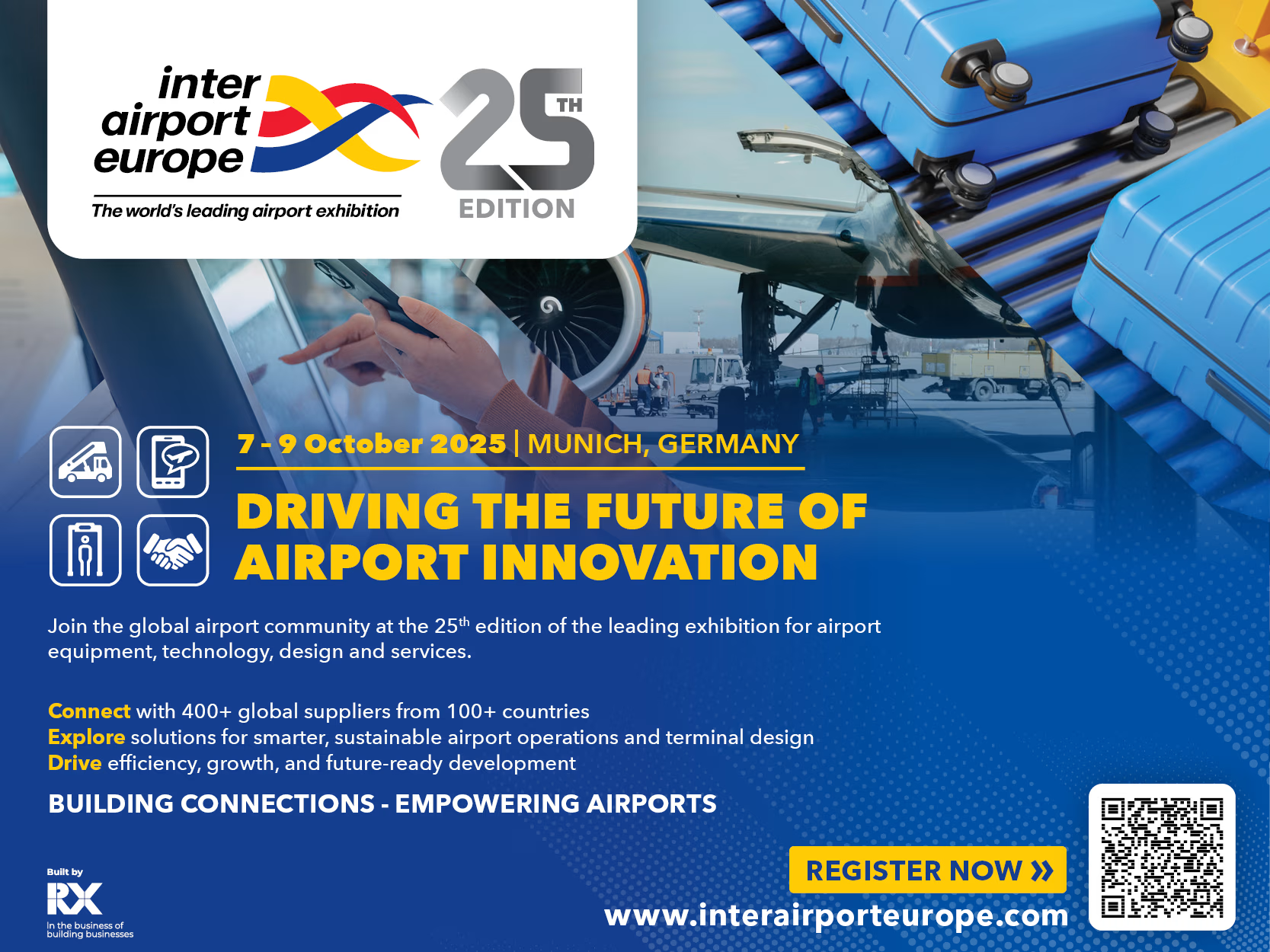Innovation all the way
Share
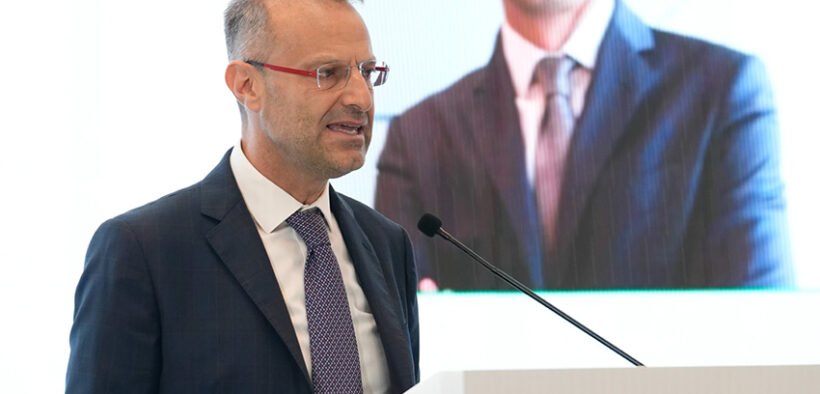
Joe Bates reports on some of the highlights of the recent Airports Innovate conference and exhibition in Rome.
All roads led to Rome for this year’s Airports Innovate conference and exhibition which once again showed that airports are becoming increasingly innovative in the ways that they operate and plan for the future.
New technology was, of course, high on the agenda, although as conference master of ceremonies, SITA’s Catherine Mayer was quick to point out, the event was also about people as innovation comes in many forms, with IT invariably acting as the enabler for airports and their staff to be more efficient, sustainable and customer friendly.
As a result, the wide scope of the conference led to it addressing a host of different challenges and opportunities facing the world’s airports, ranging from accommodating traffic growth and a new era of advanced air mobility to making aviation an appealing career for future generations.
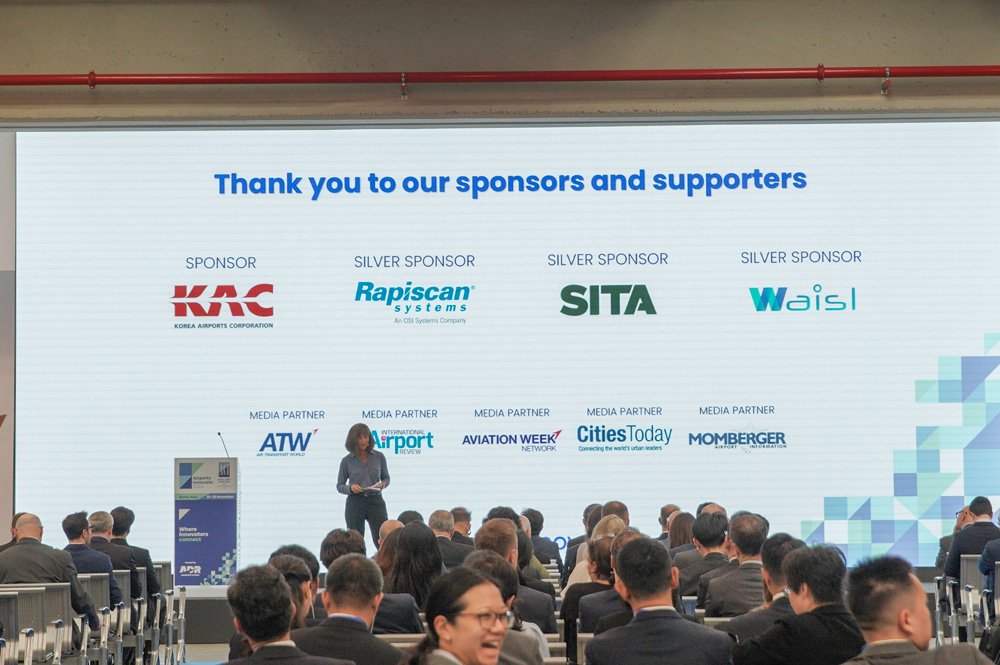
In her opening remarks Mayer, SITA’s vice president for airports, noted: “We typically think of artificial intelligence, AI, when they talk about innovation, but the true definition of innovation is any new idea, method or a device that changes the way that things have been done.
“Innovation is also very disruptive and critical for businesses and organisations. Today, in order to succeed, in order to be ahead of the competition, and in order to really be a leader, we have to innovate.”
Vincenzo Nunziata, chairman of event host Aeroporti di Roma (ADR), provided the welcome address, warmly welcoming more than 400 delegates from 53 different countries in attendance to Rome.
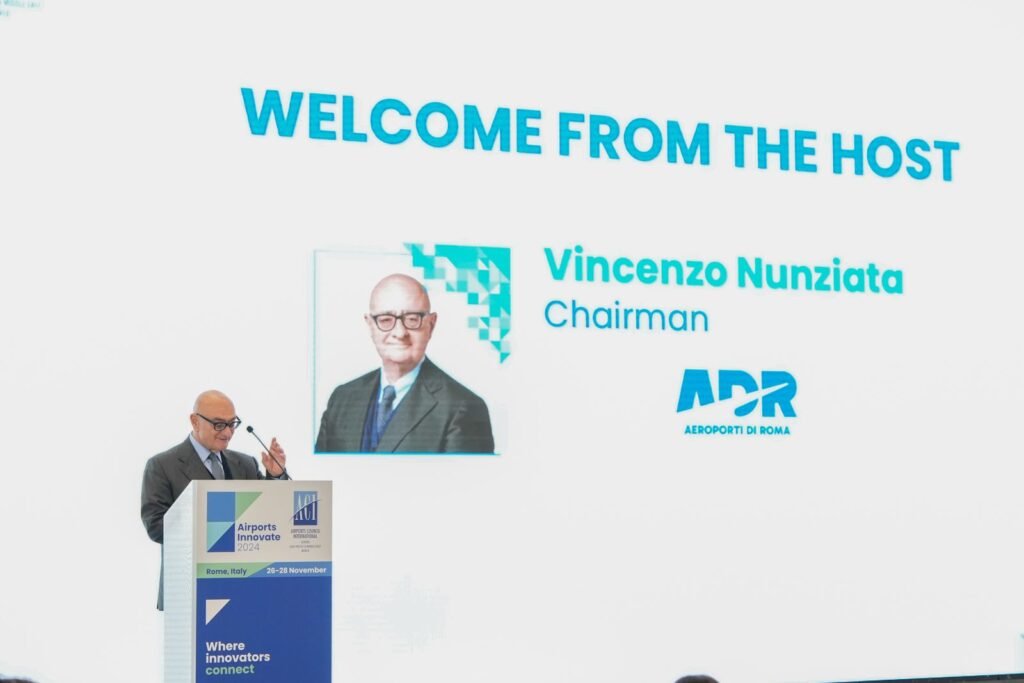
He was followed by one of the industry’s most innovative airport leaders, ADR CEO, Marco Troncone, who delivered a powerful speech about the importance of innovation and industry collaboration, citing a number of examples of how Rome’s Fiumicino has led the way with innovative new facilities, services and initiatives.
Indeed, Troncone revealed that innovation is a crucial pillar in ADR’s mission to build the airport of the future, basing its strategy on open innovation and international co-operation.
He noted that the right attitude and culture within a company plays a key role in fostering innovation, and that the process of being an innovation trendsetter inevitably involves some failures.
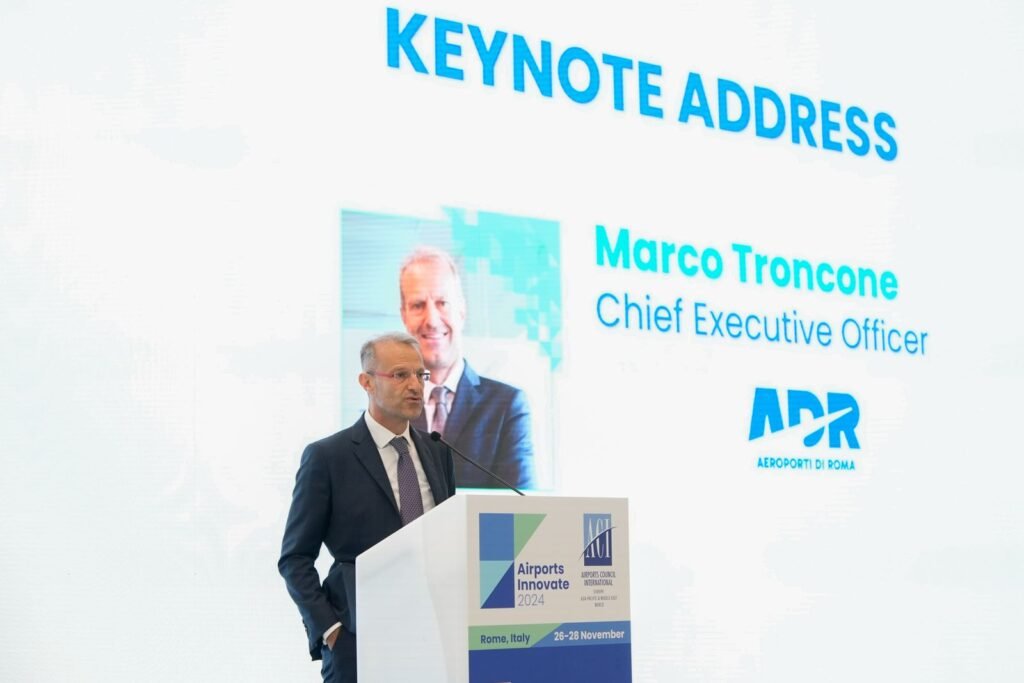
Troncone added that ADR welcomes the opportunity to share views and ideas with its peers from all over the world, stating that in the search for global solutions, “the objective is not to arrive first, but to arrive together, with many”.
On the opportunities ahead, he said: “I’ve seen the latest predictions issued by Booking.com, probably many of you have also read those. One of those was called the gate escape. Basically, we are seeing that more than a third, 34% of travellers, are interested in visiting a destination based on its airport, with Gen Z and millennials driving the trend.
“Among young travellers, 43% are keen to embrace indulgent airport experiences, turning layovers into luxurious pre-trip experiences.
“This means really that we have a great opportunity and challenge ahead of us to re-transform and re-position the role of the airport from a black hole, projecting passengers from point A to point B, to become distinctive places in their own right.
“It’s a transformation story, which is about investment, about people, about beauty. We’re working a lot on beauty here in Fiumicino.”
He continues: “Everyday is more about innovation. [To make] more engaging, more enjoyable airports, as well as more efficient, safer and more resilient infrastructure. And this is exactly why we are gathering here, really to create a new story, to create our future.
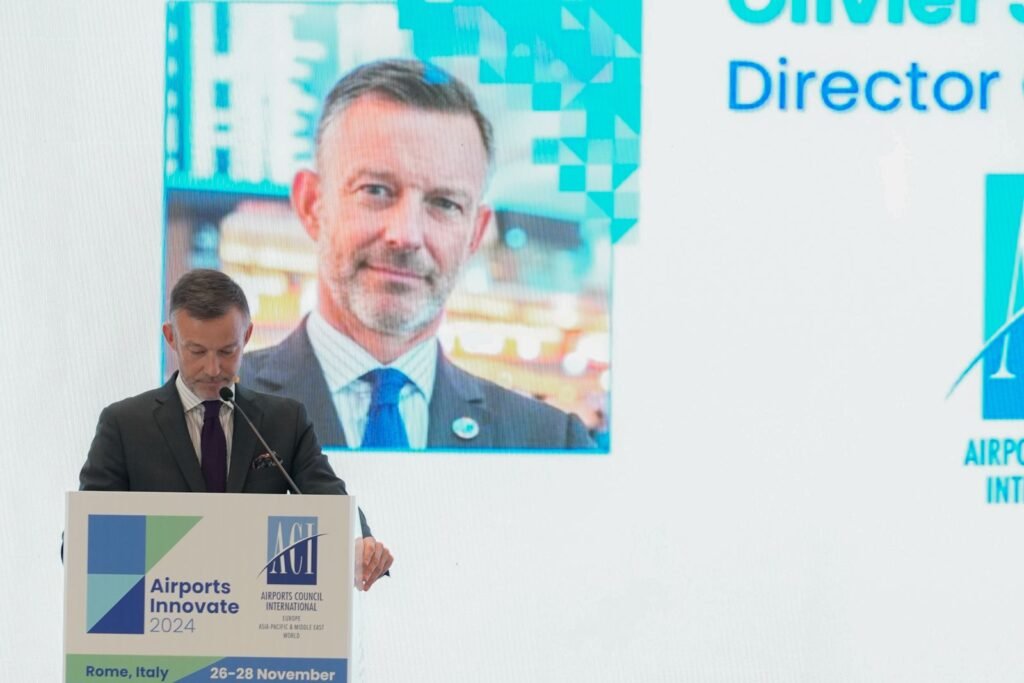
“Rather than technology wizard gathering, I see this event as a gathering of dreamers. An inspiring event for aspiring people looking at the airport of the future.”
Next up were State of the Industry addresses from ACI World director general, Justin Erbacci, and ACI EUROPE director general, Olivier Jankovec.
Speaking first, Jankovec addressed the region’s traffic and financials, revealing that 43% of European airports achieved a full passenger recovery in 2023 although the 2.3 billion passengers handled across the continent was still down 6.3% of pre-pandemic 2019.
In terms of financials, he told delegates that Europe’s airports are now much closer to pre-COVID profit levels, with the overall 7% upturn in revenues in 2023 being driven by non-aeronautical activities. Nevertheless, rising operating costs now 14% above 2019 makes for a challenging environment with Europe’s airports facing debts of €130 billion – 33% higher than in 2019.
Jankovec stated that the good news is that he felt that Europe’s airports had “finally turned the corner in 2024” with passenger levels up by 7.4% in the year to date and freight volumes soaring by nearly 12% in the first 10 months of the year.
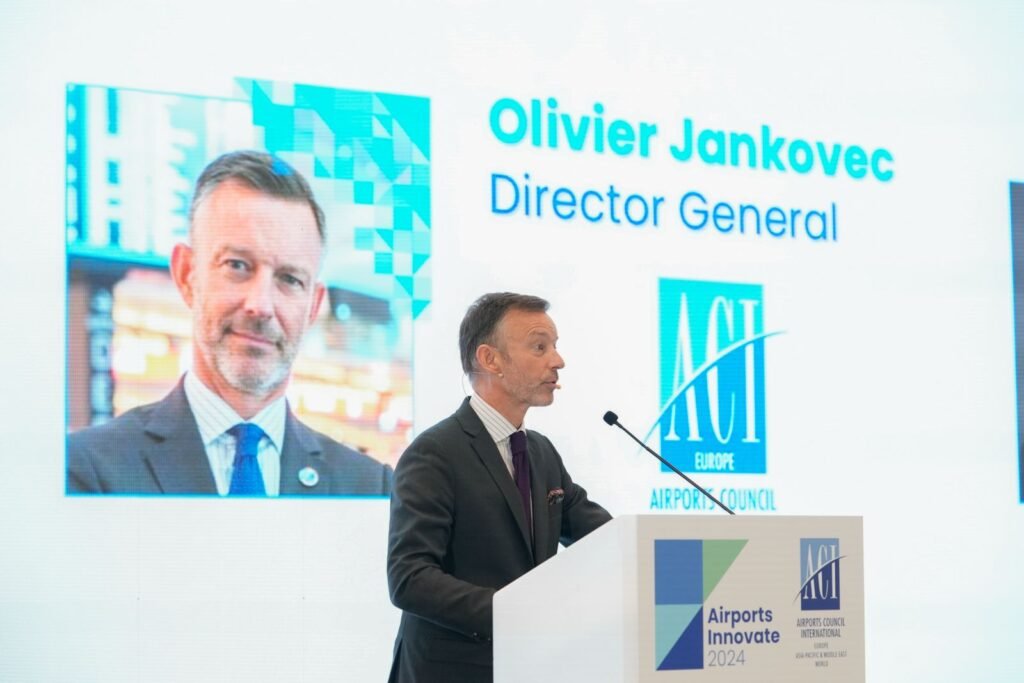
These figures mean that 49% of the region’s airports have experienced a full passenger recovery, although the market was still fragmented with big differences in performance levels between countries, non-EU nation Albania doing best of all with passenger numbers currently 225% above 2019.
Looking ahead, ACI EUROPE forecasts that this year’s predicted 3% rise in passenger volumes over 2019 will be followed by healthy annual increases vs 2019 of 12% in 2025, 19% in 2026 and a significant 24% in 2027.
Downside risks to this projected, warned Jankovec, are the delay in aircraft deliveries and availability of spare parts; the airlines’ capacity discipline and focus on yields; airline consolidation and network rationalisation; the economy; and geopolitics.
He also touched on climate change and how it is impacting on travel as well as on airport operations and airport infrastructure, citing this year’s floods at Dubai International Airport and most recently in Palma and Valencia in Spain as the most extreme examples of changing weather patterns.
Coming to the end of his presentation, Jankovec referred to today’s market as “the age of risks and uncertainties”, noting that this means that resilience and future proofing is key, especially when it comes to sustainability and airport business models.
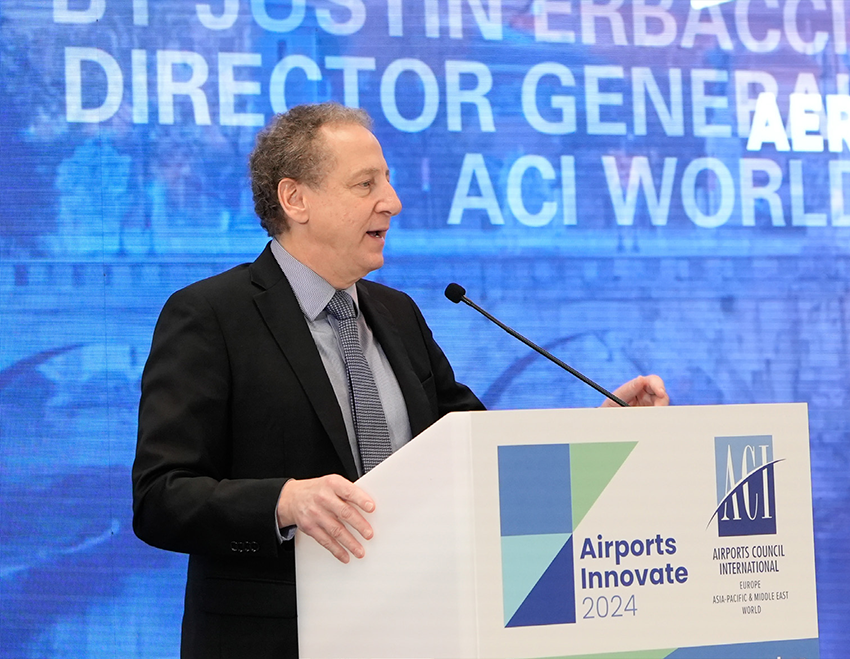
“When it comes to the transformation agenda, the new airport value creation model has three key pillars – sustainability, innovation, and diversification,” said Jankovec.
ACI World’s Erbacci used his time on stage to note that globally the industry was moving from a period of recovery to a period of growth, with a total of 9.5 billion passengers expected to pass through the world’s airports in 2024 – a rise of 10% on last year and, significantly, a 4% increase on pre-COVID 2019.
This year’s upturn, he noted, happened despite two global conflicts, grounded aircraft due to engine and faults and maintenance, delayed aircraft deliveries, human resource issues, and high ticket prices.
From a long-term perspective, he said ACI World is projecting continued significant growth with global traffic doubling to 18.5 billion passengers per annum by 2042 and a little above 23.2 billion in 2052.
Yet despite the good news, Erbacci confirmed that airport profitability is in decline, with globally airports experiencing decreased revenues and rising debt levels further weaking the financial health of the industry.
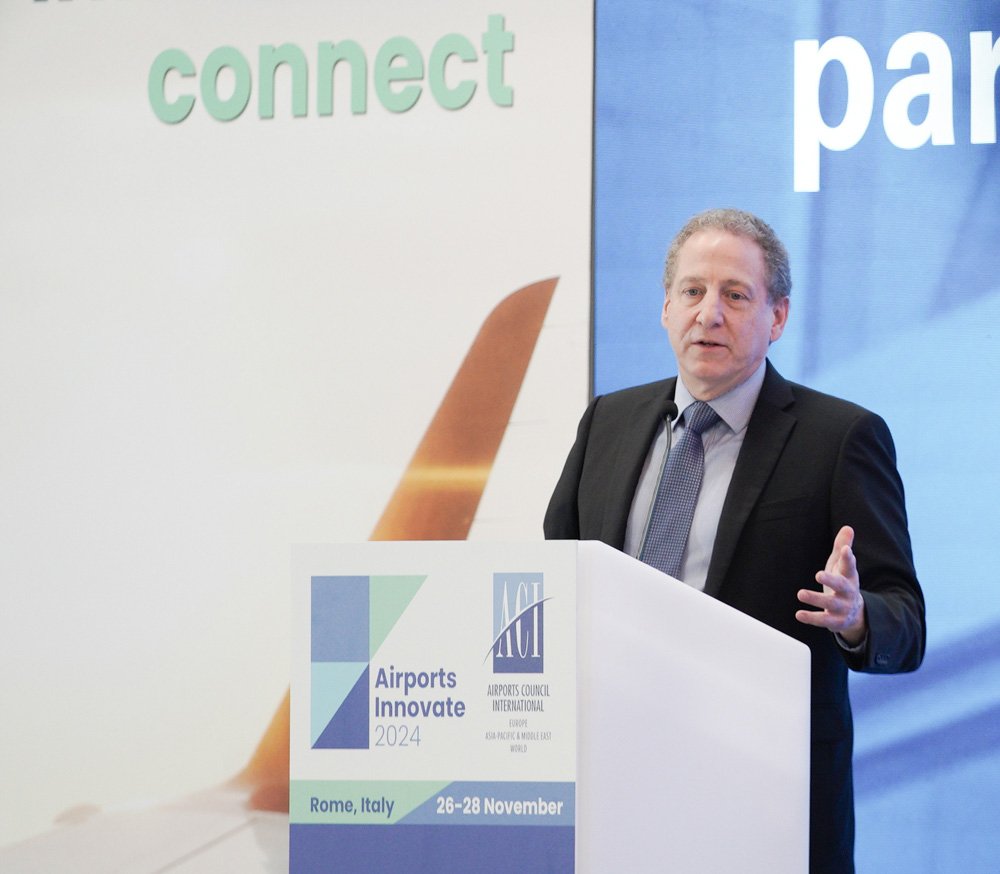
“The expected significant traffic growth and the challenges of financing new infrastructure means that ACI’s strategy focus will be on championing the cause for the transformation of airports to help them deal with this growth and be financially viable.
“One of the areas we need to focus on is how airports use existing capacity more efficiently and sustainably by using new technologies that help us get more out of what we have today.
“We also need to look at how we develop and manage new infrastructure that will provide more safe and sustainable capacity. Then we have to help airports figure out how to adapt commercially to maintain and improve financial viability as they can no longer depend on passenger growth to fund capacity increases and operational improvements.
“There is also the need to improve the efficiency and safety of operations and, most importantly, the overall customer experience.
“These are the areas we are focusing on and the challenge for all of us is how we use innovation to meet these goals.”
He concluded by pointing out that collaboration and innovation across the industry is key to the future success of aviation, stressing the importance of executive support for innovation and innovative cultures that give people the freedom to take risks and innovate.
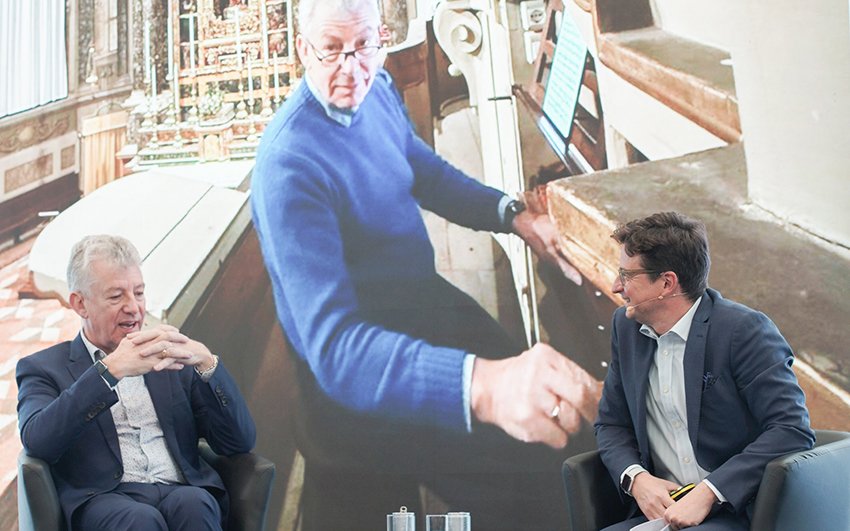
A busy opening session ended with ACI Asia-Pacific & Middle East’s director general, Stefano Baronci, sitting down with Dubai Airports CEO, Paul Griffiths, for an engaging conversation about the future of aviation.
Baronci, who prior to the event noted that “innovation is no longer a luxury but a necessity for airports in today’s fast-evolving aviation landscape”, opened their session by touching on traffic growth and highlighting some examples of airport innovation across the Asia-Pacific and Middle East regions.
His snapshop of the region included discussing a new innovation survey of 22 airports in Asia-Pacific and the Middle East which revealed that 82% of the participants had already inplemented biometric technology and 64% technology such as robots and AI powered tools to enhance terminal operations for passenger flows, cleanliness and security.
Although the survey discovered that the use of automated robots or self driving vehicles on the apron was still in its infancy across the region with just 9% of airports trialling or utilising such technology, 41% stated that it was in the pipeline.
Interestingly, ACI Asia-Pacific & Middle East’s Innovation Survey showed that 82% of the 22 airports surveyed had created their own dedicated Innovation Department.
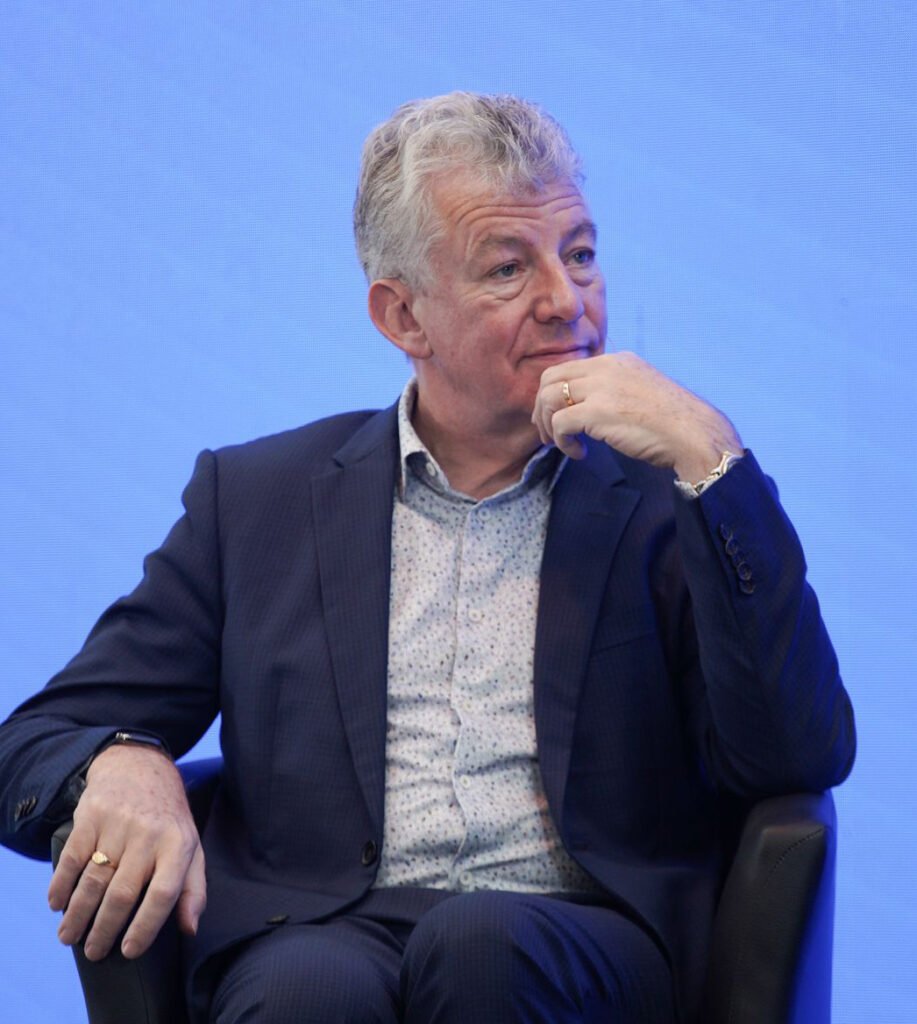
The always top draw Griffths followed suit by addressing a number of innovative concepts and procedures that could transform the industry going forward, and shared his thoughts on how airports can drive economic growth and become destinations in their own right.
He indicated that some of the technologies and new concepts being trialled and tested by Dubai Airports today could be used in the next development phase of Dubai World Central-Al Maktoum International Airport, which if all goes to plan, will ultimately become the world’s largest airport handling in excess of 260 million passengers per annum.
A great believer in the power of technology, Griffths noted: “When I arrived at Dubai Airports in 2007, I was told that the maximum throughput we could get through Dubai International Airport [DXB] was 65 million passengers. Since then we have persistently deconstructed every point of the passenger journey and reconstructed it with more technology and greater efficiency, and we will handle 93 million passengers this year.
“In 2007 we handled 32 million passengers and had 5,500 staff. Now we have 93 million passengers and 1,700 staff, so the technological efficiency we have achieved by just keeping people moving has been amazing.
“If you can double the throughput by halving the processing time that a passenger has to endure going through an airport you have achieved three things. Amazing increases in capacity, avoided investing in costly new infrastructure and increased customer satisfaction levels.”
Griffiths, who has overseen DXB’s rise to become the world’s busiest international airport, also spoke about alternative flying modes such as eVTOLS and their role in driving sustainable aviation and his passion for music and specifically church organs!

Bob Kwik, worldwide head of airports and ground transportation for Amazon Web Services followed with an address about ‘Charting New Skies with Generative AI’ ahead of two panel discussions. The first around the rather wordy topic of ‘How to Put Innovation at the Very Core of Your
Business and Truly Execute it’ followed by ‘Innovation in Improving Daily Operations’.
In the hot-seat in the first panel – moderated by Pierre Charbonneau, ACI World’s vice president for events, commercial programmes and services – Riga Airport’s CEO and chair of the executive board, Laila Odina, stated the Latvian airport has its own innovation team and actively encourages staff to submit ideas on how it could make improvements.
Speaking on the same panel, ADR’s senior vice president for transformation and technology, Emanuele Calà, described the number of ways the airport operator put innovation at the heart of the business, ranging from establishing its own highly successful Innovation Lab in 2021 and holding regular hackathons.
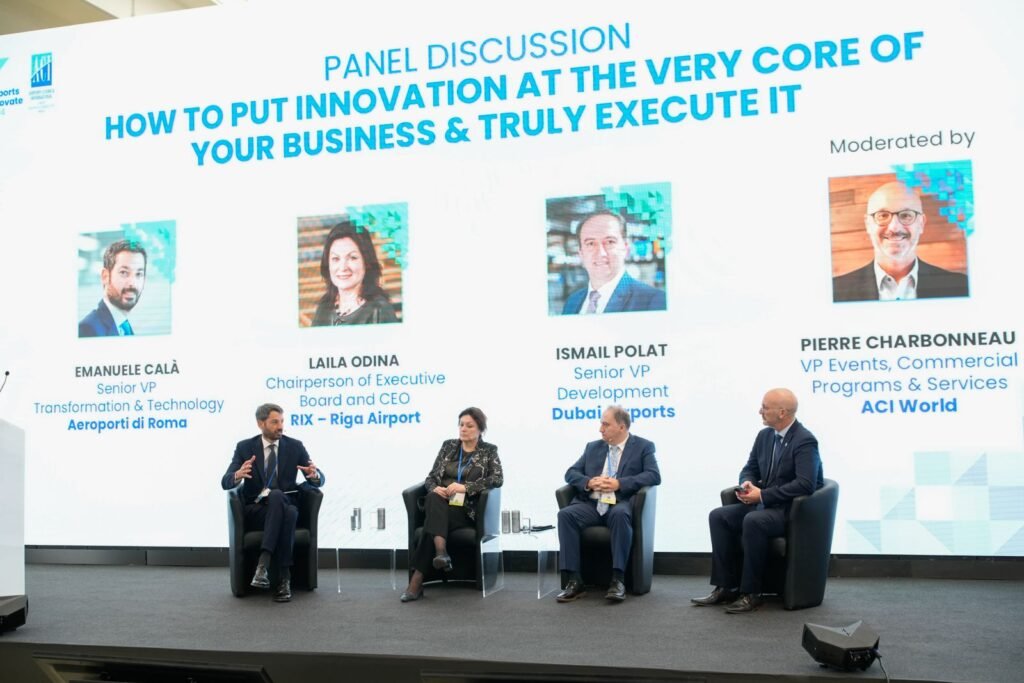
“Innovation is not just a buzz word for us, it is a key pillar of our business strategy,” stated Calà. “It is not a goal, it is a lever to help us meet the challenges that we face, such as raising capacity, increasing customer satisfaction and sustainable development.
“Everyone has a part to play in innovation, it is not just about the innovation team or the IT department. Everyone in the company can contribute.”
Innovation means adding value to processes and procedures across the entire airport ecosystem, stated Ismail Polat, senior vice president for development at Dubai Airports.
The Innovation in Improving Daily Operations panel boasted a diverse group of speakers that included Beijing Daxing’s general manager of international affairs, science and technology department, Lubing Wang, and representatives from SITA, Aurrigo, Lufthansa and ADB Safegate.
Talking about artifical intelligence, SITA’s senior product manager for total optimizer, Gareth Lawton, stated that AI will actually empower people, enhance airport operations, and help them meet their respective capacity and sustainabilty challenges while also ending the traditional practice of teams working in silos and not sharing a holistic vision.
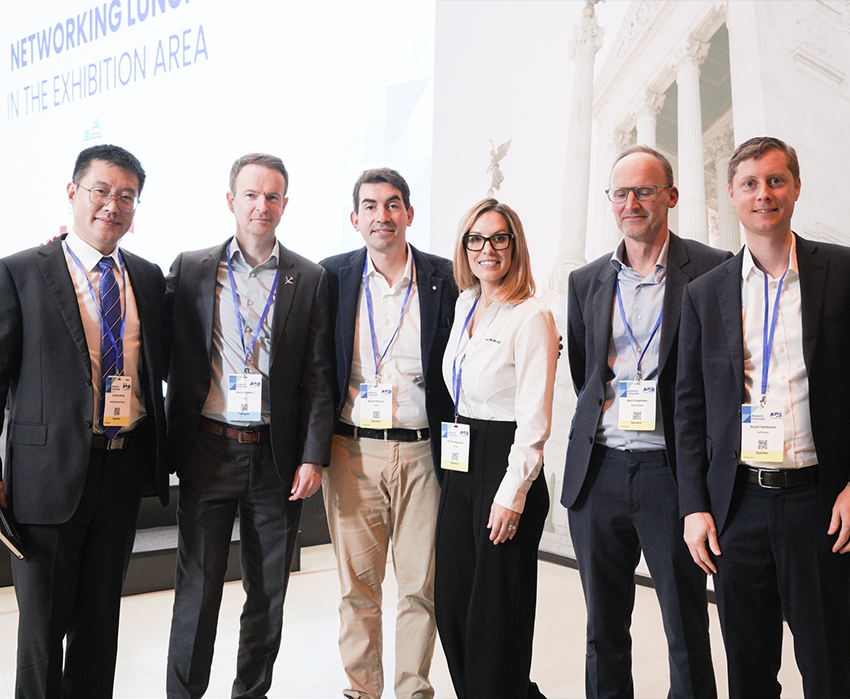
He told delegates: “We believe that AI is going to be a critical enabler that helps us tackle problems in a number of different areas. Sensationalist news stories about evil AI coming and taking people’s jobs couldn’t be further from the truth.
“Instead, we think AI should be treated as a junior member of your team and given repetitive, simpler tasks. You still need to tell the AI what it needs to achieve, what it needs to report, and check that it has done it in the way you need. Far from replacing humans, it will promote humans to do things that people are better at, such as strategic thinking and engaging with other humans.”
In a similar vein, Tenille Houston, vice president of public relations and communications for autonomous vehicle specialist, Aurrigo, stated that the next generation of autonomous electic ground vehciles would increase safety by helping staff who would no longer have to handle heavy loads and work in all weathers on the ramp.
She added that such equipment will also increase operational efficiency and help airports cope with staff shortages and reduce their CO2 emissions. Beijing Daxing’s Wang noted that the Chinese airport’s commitment to improving daily operations extended to it operating an energy efficient terminal while the elecritifaction of 80% of its airside vehicles and utilisation of windpower had reduced its CO2 footprint by 150,000 tonnes per annum.
Also on the panel were Lufthansa’s head of project and processes, group, Stuart Holdstock, and Gert Taeymans, ADB Safegate’s business vice president for Europe.
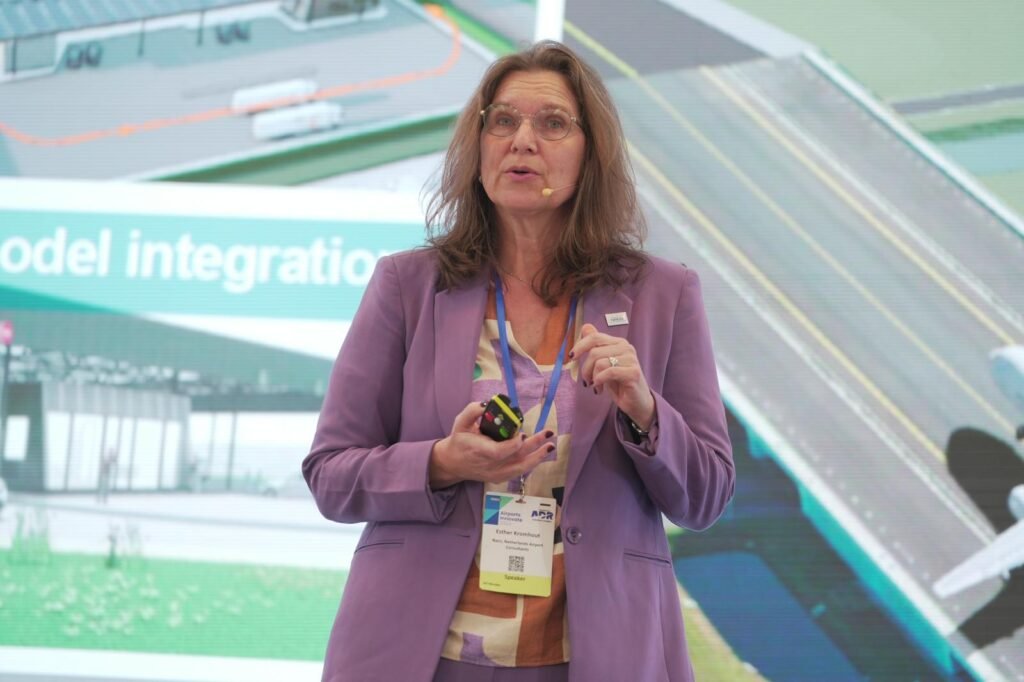
NACO’s managing director, Esther Kromhout, opened the afternoon proceedings with a presentation called ‘Resilience by Design’, which covered some of the ways innovation is being used in response to more challenging regulations, economic prospects and climate events.
The renewable energy debate then got into full swing with a panel discussion entitled ‘From Air-ports to Ener-ports: Innovation in Hydrogen Infrastructure and Energy at Airports’.
Discussing the impact the adoption of hydrogen as a fuel source for aviation could have on the industry as well as the potential for airports to effectively reinvent themselves as energy providers were Aena’s director of sustainability, Ana Salazar Lopez-Pedraza; Zeroavia’s director of infrastructure, Peter Gallen; and Fraunhofer Institute’s senior researcher and project manager, Karsten Uhing.
Aena’s Lopez-Pedraza believes that airports have to reinvent the way that they operate to meet aviation’s sustainability goals, noting that “Aena’s airports are working to adapt to the new needs of our customers in terms of the supply of sustainable energy and fuels”.
This strategy, she said, included looking at hydrogen, which she believed could become a key energy source across airport sites and, potentially, an “energy backbone” for airports by 2050.
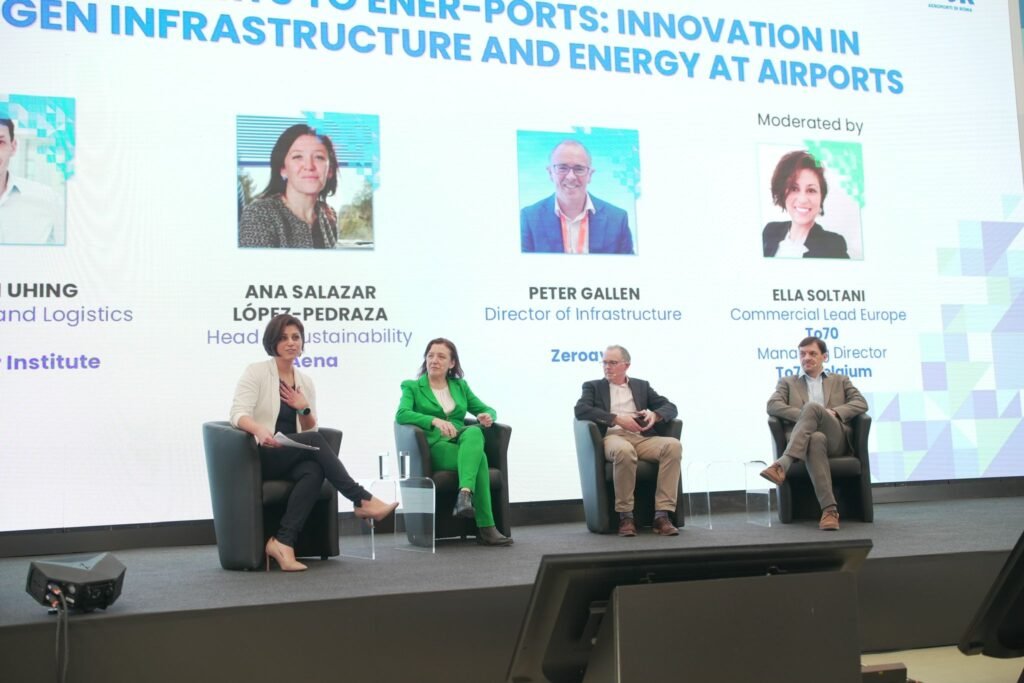
Zeroavia’s Gallen believes that it is time for airports to look at upgrading their refuelling infrastructure so that they are ready for hydrogen production and storage, especially with hydrogen powered aircraft expexcted to take off in 2026 and possibly operating transatlantlic services by 2040.
The Fraunhofer Institute’s Uhing suggested that a possible future scenario for the development of hydrogen for the aviation industry might involve airports forming investment bodies with partners from other modes of transport to lower the cost of its production.
The spotlight then turned to air traffic control and efforts to achieve a Single European Sky when Andreas Boschen, executive director of the SESAR 3 Joint Undertaking, delivered a keynote speech discussing the role of airports in delivering the Digital European Sky.
He shared the tangible benefits brought by SESAR JU solutions, including enhanced safety, cost efficiency, and improved connectivity, and highlighted the European ATM Master Plan, a roadmap prepared in consultation with all European stakeholders that will serve as a powerful tool for transformation.
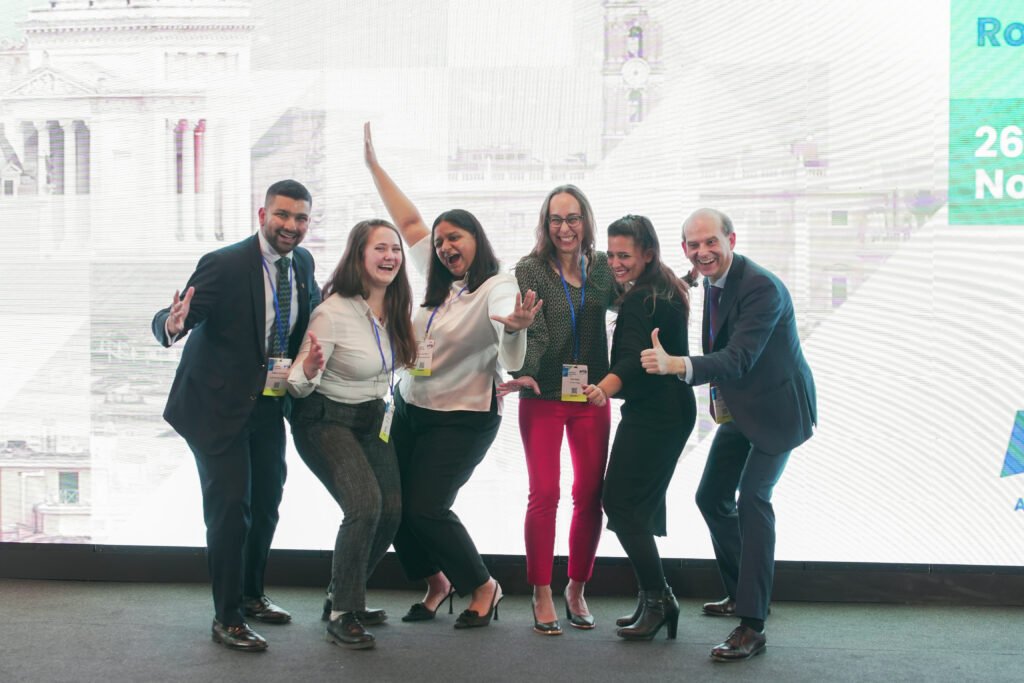
We were now into the last few sessions of a busy day and, in the first of these, attention was turned to the the need for innovation in staff recruitment, retention and progression to ensure that the industry continues to attract the talent it will need in the future.
And in a surprise twist to the usual set-up, the panel was actually made up of comparatively new recruits to the industry, who spoke about their experiences, the initial challenges they faced and offered advice to airports on how they might consider doing things differently when recruiting from Generation Z.
All three – Aline Henne, who works in digitalisation and innovation at Stuttgart Airport; Anushree Misra, an ORAT co-ordinator at Noida International Airport; and Diogene De Souza, an airspace and ATM specialist at London Heathrow – admitted that they suffered early frustrations in their jobs partly due to their employees not fully realising the different skill sets they offered.
Henne revealed that in her early days in the industry she felt that when she questioned the status quo she was was often met with frustrating comments like “we’ve always done it that way” and Misra believed that there needed to be more “open mindedness” from employers when it comes to dealing with young professionals.
For his part, De Souza believes that when appealing to young professionals, potential employers need to be good communicators and be honest and upfront about what they expect from new recruits, potential career advacement and pay.
McKinsey & Company partner, Giulietta Poltronieri, and Bologna Airport’s HR director, Marco Verga, were also on the ‘HR Innovations & Perspectives from Young Professionals in Aviation’ panel, moderated by Dornier Group’s director of airports and aviation, Tine Hass.
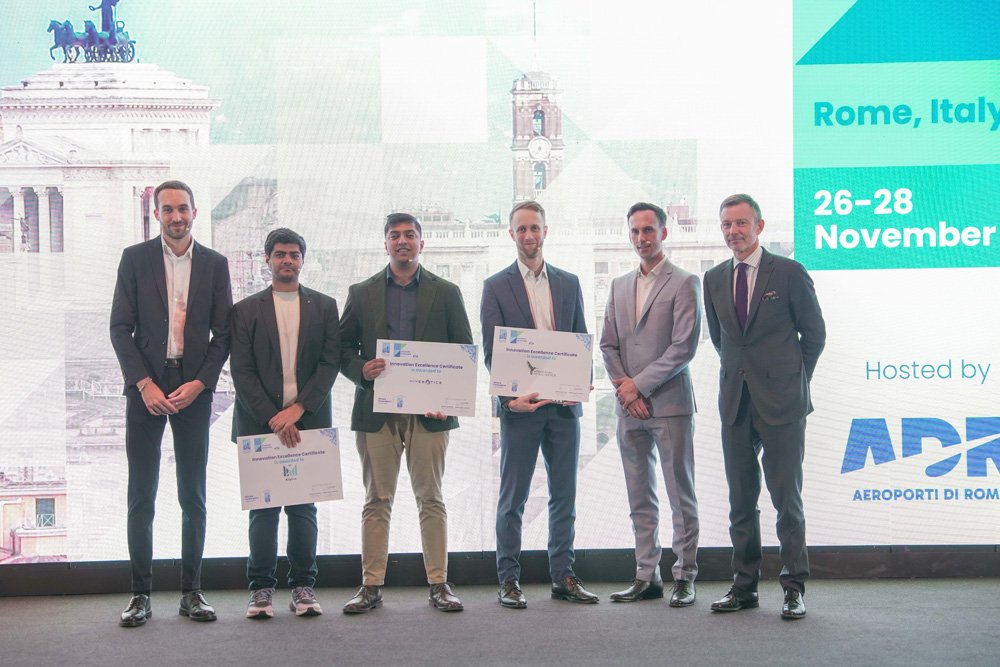
The conference part of Day 1 effectively ended with Pablo Lopez Loeches, head of ideation and entrepreneurship at Aena, moderating a session dedicated to startups.
Day 2 got off to a lively and upbeat start with a ceremony for winners of the ACI World Technology Awards, an annual event held in partnership with Amadeus.
You can read more about the awards and the respective winners (Dallas Love Field for its 3D LED Holographic Signage Fan Displays), Toronto Pearson (Optimising Turnabound Operations Using AI), ADR’s Emanuele Calà (Best Airport Innovation Leader), and Gerald Ford International Airport (Ford Launchpad for Innovative Technologies and Entrepeneurship – FLITE) on page 9 of this issue.
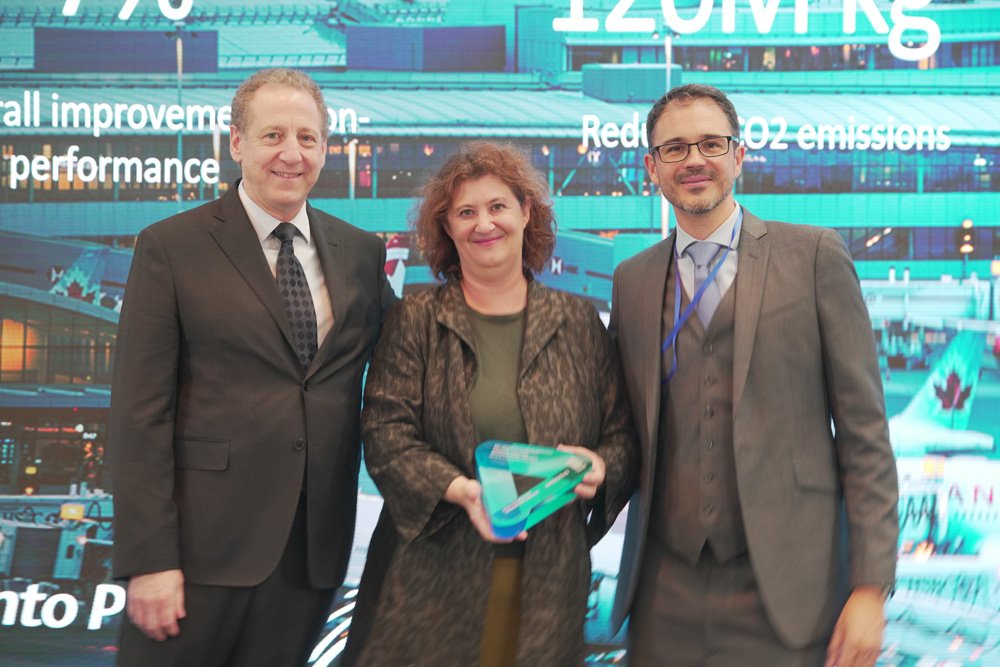
Two interesting and very different panel sessions followed, the first of which focused on Advanced Air Mobility (AAM) and the progress being made on the development of eVTOL vehicles and vertiports across the globe.
All three panelists involved in the AAM debate – Alban Negret, Groupe ADP’s head of innovation and corporate venture; Hyungkyu (Chris) Woo, Korea Airport Corporation’s senior manager of advanced air mobility office; and Ivan Bassato, chairman of vertiport development company,
UrbanV – agreed that the new mode of transport is coming, and that airports will have a part to play in their development.
Indeed, advancements in AAM technology and the development of on the ground facilities at airports and elsewhwre were addressed by the panel along with potential timescales for the widespread introduction of the technology.
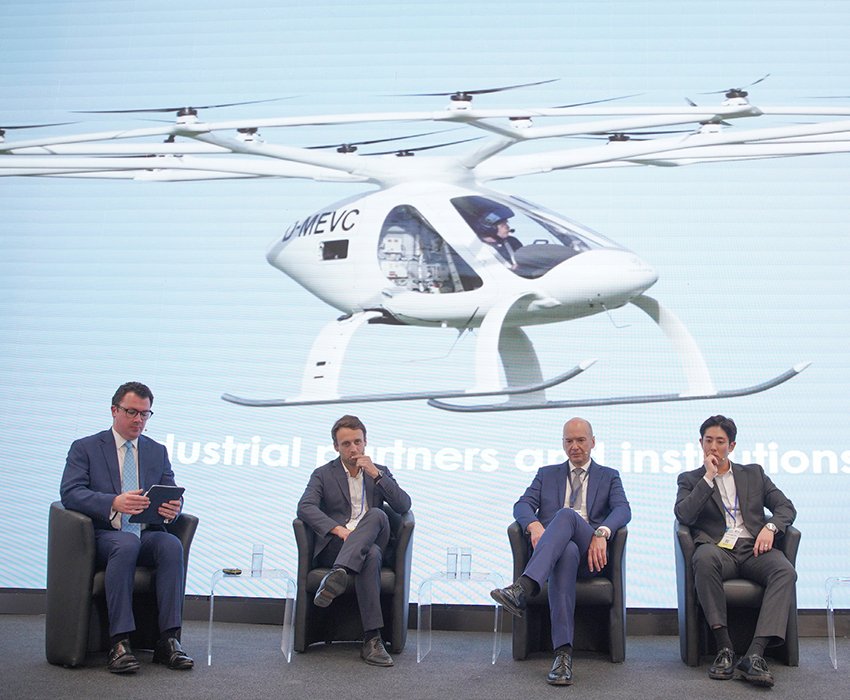
Woo revealed that KAC plans to build a vertport at Gimpo Airport that will serve the Seoul Metropolitan Area, although Jeju Island is expected to become the first region to handle AAM operations in South Korea with eVTOL flights starting in 2032.
He said: “Leveraging our extensive experience in aviation, we are positioning AAM as a future core business. We believe it will provide seamless future mobility connections and broader aviation services frontier.”
While Groupe ADP’s Negret reminded delegates that in August 2024, after years of testing, the company launched the world’s first operational vertiport in collaboration with Volocopter and the French Civil Aviation Authority.
Located close to the Château de Versailles in Saint-Cyr-L’École, it exclusively handled eVTOL flights between Paris and Versailles this summer. Together with the Paris Hospital Authority and ADAC, Groupe ADP is now exploring the potential of using eVTOLs to transport medical supplies and emergency evacuations in the Paris region.
UrbanV Bassato’s spoke about ongoing vertiport/eVTOL projects in Italy at Rome’s Fiamicino Airport as well as in Bologna and Venice and outlined the bigger global picture for the development of the new mode of transport based on projects in Brazil, the EU, USA, UAE and Saudi Arabia.
According to his data, the US, UAE and Saudi Arabia are leading the world in investment and market readiness with eVTOL manufacturers Joby, Archer, Beta and Eve forecasting the launch of their first commercial in the US, UAE and Brazil respectively in 2025/2026.
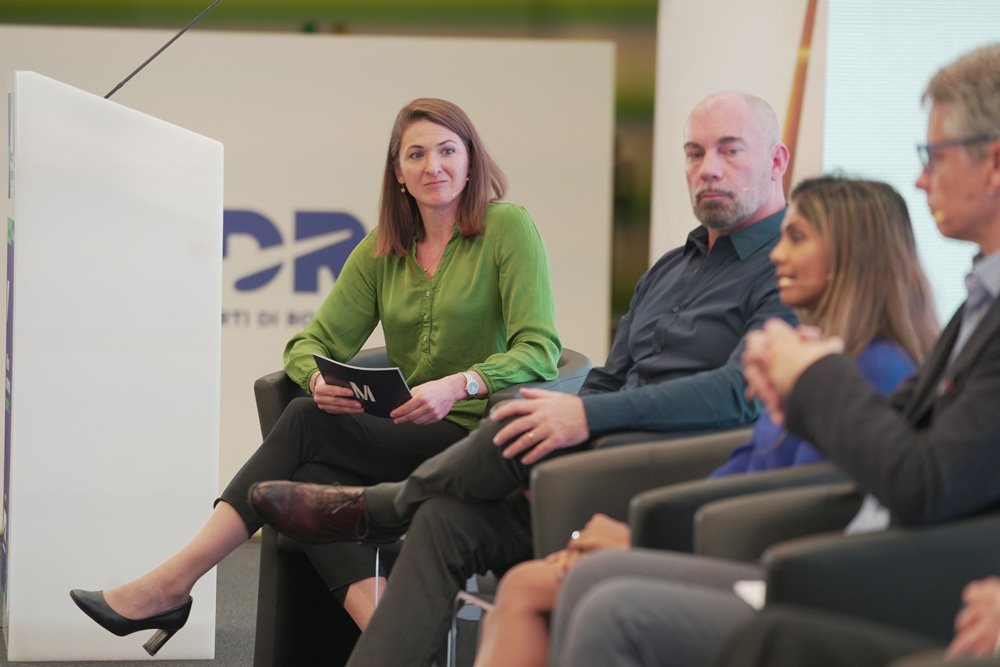
Issues such as using data to help airports reduce green house gases, the value of digital twins and robotics were covered in the second panel, ‘Navigating Tomorrow: Using Data and AI to Forecast the Future’.
In the spotlight for this one were Narita International Airport Corporation deputy general manager, Tatsuya Izumi; Vancouver Airport Authority’s director for innovation and product development, Chris Gilliland; Cirium’s vice president of product, Niha Shaikh, and WSP’s global AI director, Massimo Dragan.
It was followed by a panel discussion about ‘Innovation for the passenger experience’ which addressed the importance of change management in driving innovation and how airports collaborate with startups among a host of other issues.
SEA Milan Airports’ head of innovation, Maddalena Spreafico, reaffirmed that innovation is a key stratetic pillar for the Italian airport operator.
While fellow panelist, Aena’s director of innovation and customer experience, Luis José Caõnón Ordóñez, described his company’s efforts to innovate and enhance the passenger experience by using AI and other technologies at its airports across Spain.
Also on the lively and entertaining panel were Neil Barnfather, chief commercial officer of Goodmaps; and Kristof Philips, chief commercial officer of TCR International.
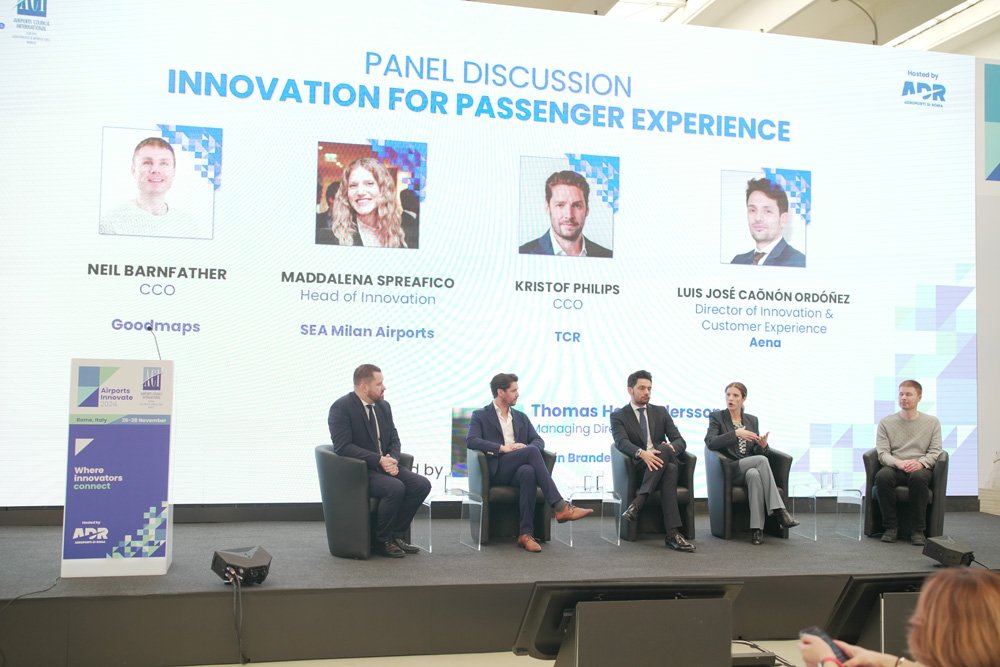
A ‘Climate Adaption Briefing’ by ACI EUROPE/Eurocontrol followed before a panel discussion on ‘Enhancing Sustainability Through Innovation’ brought an end to the conference sessions.
In the latter, Christel Vandenhouten from Brussels Airport provided an overview of the impressive strides Brussels Airport is making in its decarbonisation journey and the continued success of Stargate, an EU Commission backed initiative to designed to accelerate aviation’s green transformation.
Innovation is at the core of Brussels Airport’s Stargate strategy, said Vandenhouten, which features 30 different projects with a focus on decarbonisation, improving the local environment, and a modal shift away from CO2 emiting vehicles.
She noted that enhancing the local environment meant embracing the electrification of ground equipment and the testing of new technology such as the Taxibot, and that BRU’s decarbonisation goals included developing an on-site facility for research for gathering insight into SAF blending, its supply chain and certification processes.
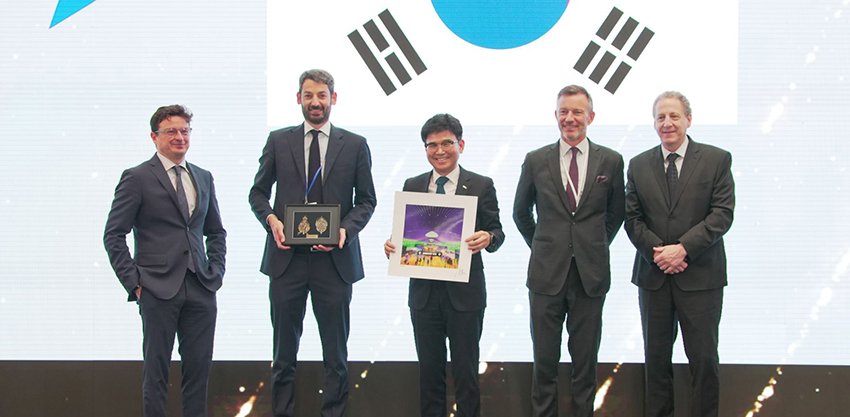
While Turin Airport’s operations, development and maintenance director, Lorenzo Gusman, told the audience that his gateway was now focused on reducing Scope 3 emissions and was preparing for the first electric powered aircraft flights within the next 10 years.
A member of the EU backed TULIPS project dedicated to developing innovations that facilitate the transition to low-carbon mobility and enhance the sustainability of airports, Turin Airport has its sights set on becoming a ‘Smart Energy Hub’ using a combination of solar and wind for power and hydrogen and SAF to fuel aircraft.
That just left time for the announcement that Korea Airports Coporation will host next year’s Airports Innovate conference in Busan in South Korea in November 25-27, 2025. Based purely on what we heard and saw from members of the KAC team in Rome, it promises to be another inspiring event.

